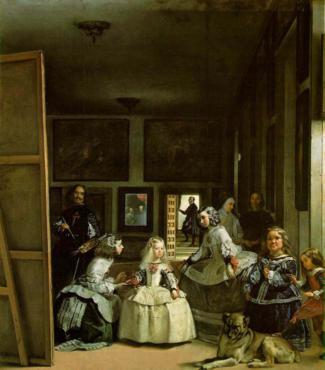Diego Rodríguez de Silva y Velázquez, known to the world as Diego Velazquez, is not only Spain’s most renowned painter but also one of the best artists of all ages. Born a few days before his baptism on June 6, 1599 in Seville, Spain, he was the eldest child of Jeronima Velazquez and Juan Rodríguez de Silva. Both his parents came from average nobility; as his mother belonged to the lesser gentry of the Hidalgo class while his father was a lawyer who came from a decent Portuguese ancestry. He carried the surname of his mother since it was a Spanish tradition that the firstborn male will preserve his mother’s heritage.
Velazquez had a religious upbringing and was given a good education by his parents. He took up language and philosophy trainings and eventually revealed his great interest for the arts. He studied under a highly spirited painter, Francisco de Herrera, and for one year Velazquez mastered using paint brushes with extended bristles. When he turned 12, he left Herrera’s school and became a trainee of Francisco Pacheco. Pacheco was just an ordinary artist teacher in Seville but his upfront practicality trained Velazquez to have a good eye on artistic angles and proportions. He stayed with Pacheco for five years and at the age of 19, he married his teacher’s daughter. He went to Madrid in 1622 and became the official portraitist of the Spanish royal family and other prominent European personalities.
This Spanish portraitist had a very distinctive style like no other European artist. Aside from portraits, Velazquez also made paintings about history, culture, religion, nature, and everyday life. Because of his varied works, he became known as the “noblest and most commanding man among the artists of his country”. The realism in his paintings was unparalleled, as the characters and settings on his portraits seem to breathe life. Velazquez was very good at color combinations, and his painting style showed a great balance of light and line elements. Because of this, his contemporaries regarded him as “the painter’s painter”. He has greatly influenced painters of the succeeding generation in the likes of Bartolome Murillo, Francisco de Goya, and Edouard Manet.
The Las Meninas, or Maids of Honour, is known to be the finest painting in the Western realm and one of the most bewildering too. There is a certain combination of realism and delusion in the painting that makes it complex and mysterious. It shows a room in the palace of King Philip IV with some of the characters looking directly towards the viewer of the painting. Velazquez showed himself in the picture but the main figure was the Infanta Margarita, the Spanish princess, with her maids and chaperones. According to art analysts, the Las Meninas painting portrays that “art and life are an illusion”. Velazquez might have wanted to convey that life for him is a dream too. The portrait can also be understood as a depiction of Velazquez’s career being the royal family’s Official of the Court, in which he served as such for most of his life.
Author: Shyxter
